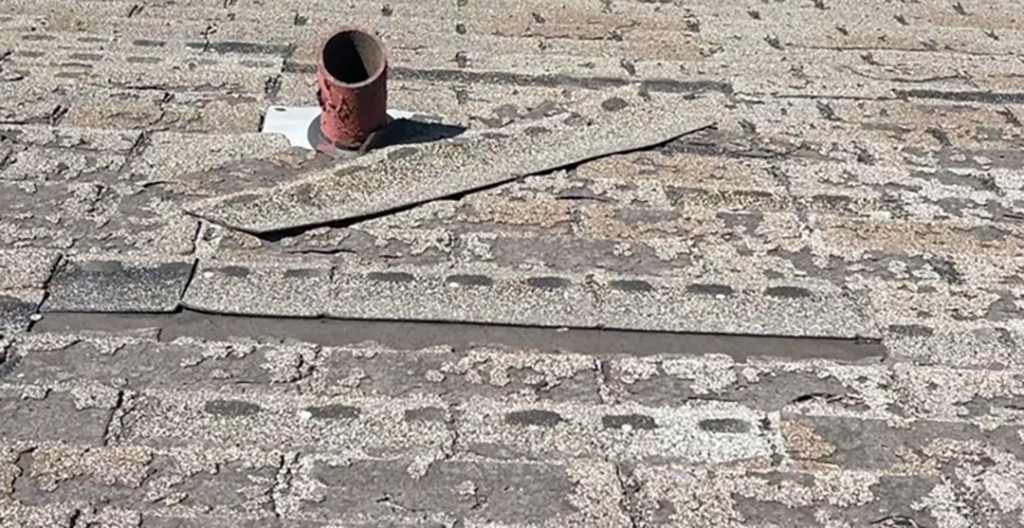
Roofing materials serve as a crucial shield against the elements, protecting our homes from rain, snow, wind, and sunlight. However, over time, even the most durable roofing materials can degrade, requiring replacement to maintain structural integrity and safeguard the interior of a building. Whether it’s shingle, slate, or rubber roofing, understanding the signs indicating the need for replacement is essential for homeowners to prevent potential damage and ensure long-term durability.
Shingle roofs are among the most common types of roofing materials due to their affordability and versatility. However, several indicators suggest it’s time for a replacement:
- Shingles that are missing, cracked, curled, or visibly damaged expose the underlying structure to moisture, leading to leaks and potential water damage.
- Granule loss, indicated by patches of bald spots on shingles, suggests deterioration and reduced weather resistance. This loss of granules typically occurs over time due to exposure to sunlight and harsh weather conditions.
- Shingle roofs have a lifespan of around 20-30 years. If your roof is nearing or has surpassed this timeframe, it’s advisable to consider a replacement, even if there are no visible signs of damage, as aging shingles become increasingly susceptible to deterioration.
- Shingles that are curling at the edges or buckling in the middle indicate moisture infiltration and potential underlying roof deck damage, requiring immediate attention to prevent further deterioration.
Slate roofing is renowned for its elegance, durability, and longevity. However, despite its resilience, there are telltale signs indicating the need for replacement:
- Cracked or missing slates compromise the integrity of the roof, allowing water penetration and risking structural damage to the underlying materials.
- Delamination occurs when the layers of slate separate, leading to flaking and deterioration. This process weakens the roof’s protective barrier, making it susceptible to leaks and water damage.
- A sagging or uneven surface indicates structural issues, possibly due to inadequate support or deteriorating roof decking, necessitating immediate attention to prevent collapse or further damage.
- Over time, slate roofs may exhibit signs of weathering, such as fading or discoloration. While this is normal to some extent, excessive weathering may indicate the need for a new roof to maintain both functionality and aesthetic appeal.
Rubber roofing, typically made from synthetic materials like ethylene propylene diene terpolymer (EPDM), offers excellent durability and resistance to the elements. However, several factors may signal the need for replacement:
- Tears, punctures, or cuts in the rubber membrane compromise its ability to repel water, leading to leaks and potential water damage to the interior of the building.
- Blistering or bubbling on the surface of the rubber roof indicates trapped moisture, which can weaken the membrane and reduce its lifespan. Addressing these issues promptly can prevent further damage and extend the roof’s longevity.
- Rubber roofing materials may shrink or expand over time due to fluctuating temperatures, leading to stress on the seams and potential separation. This can result in water infiltration and necessitate replacement to maintain a watertight seal.
- Like any roofing material, rubber roofs have a finite lifespan, typically ranging from 25 to 30 years. As the roof approaches the end of its lifespan, it’s essential to monitor for signs of deterioration and consider replacement to avoid costly repairs and potential water damage.
Whether it’s shingle, slate, or rubber roofing, recognizing the signs indicating the need for replacement is crucial for maintaining the structural integrity and longevity of your roof. By promptly addressing issues such as missing or damaged materials, signs of aging, and structural abnormalities, home and business owners can prevent costly repairs and ensure their roofs continue to provide reliable protection for years to come. Regular inspections and maintenance are key to identifying potential issues early and prolonging the lifespan of your roof, ultimately safeguarding your investment and the integrity of your home.
